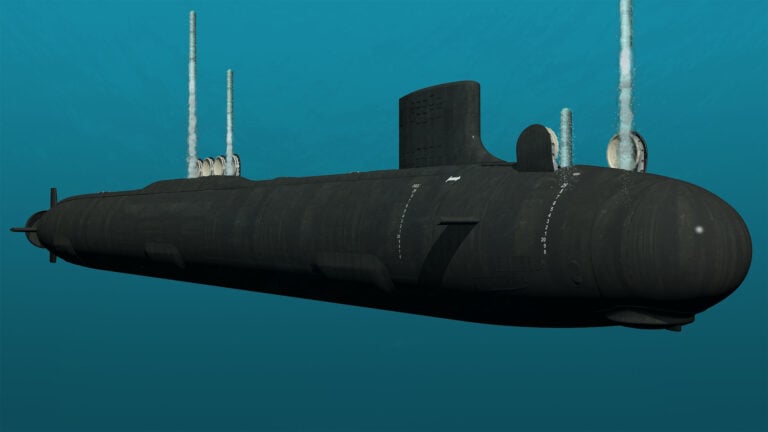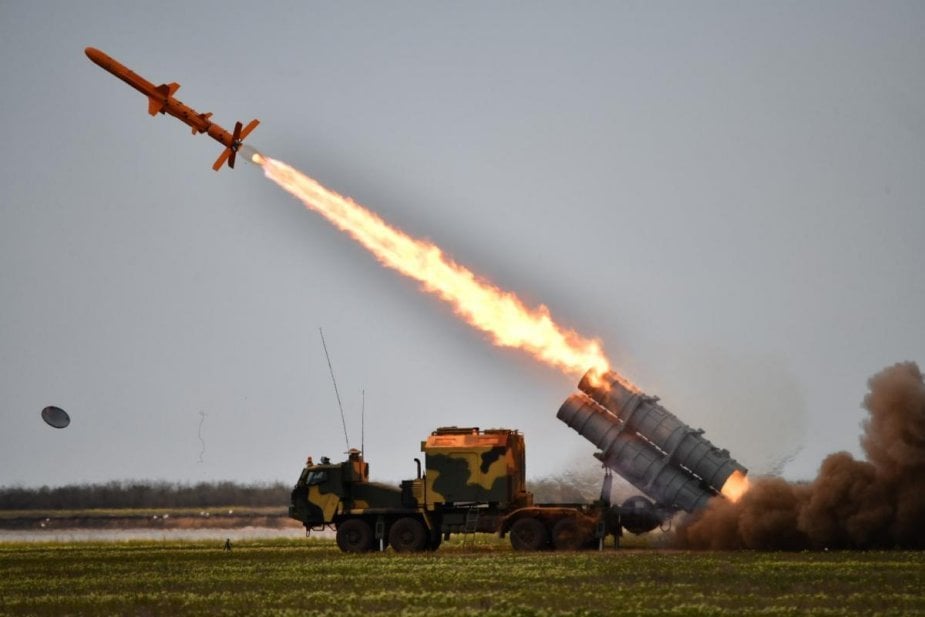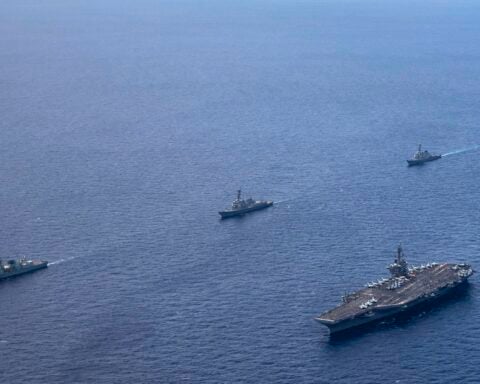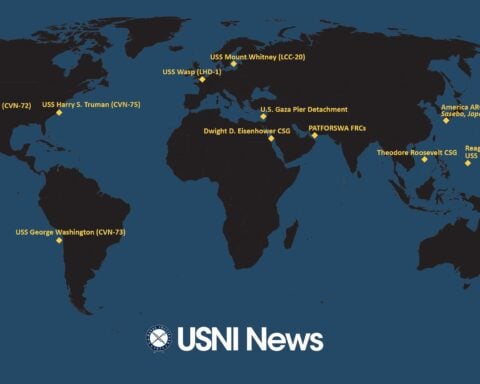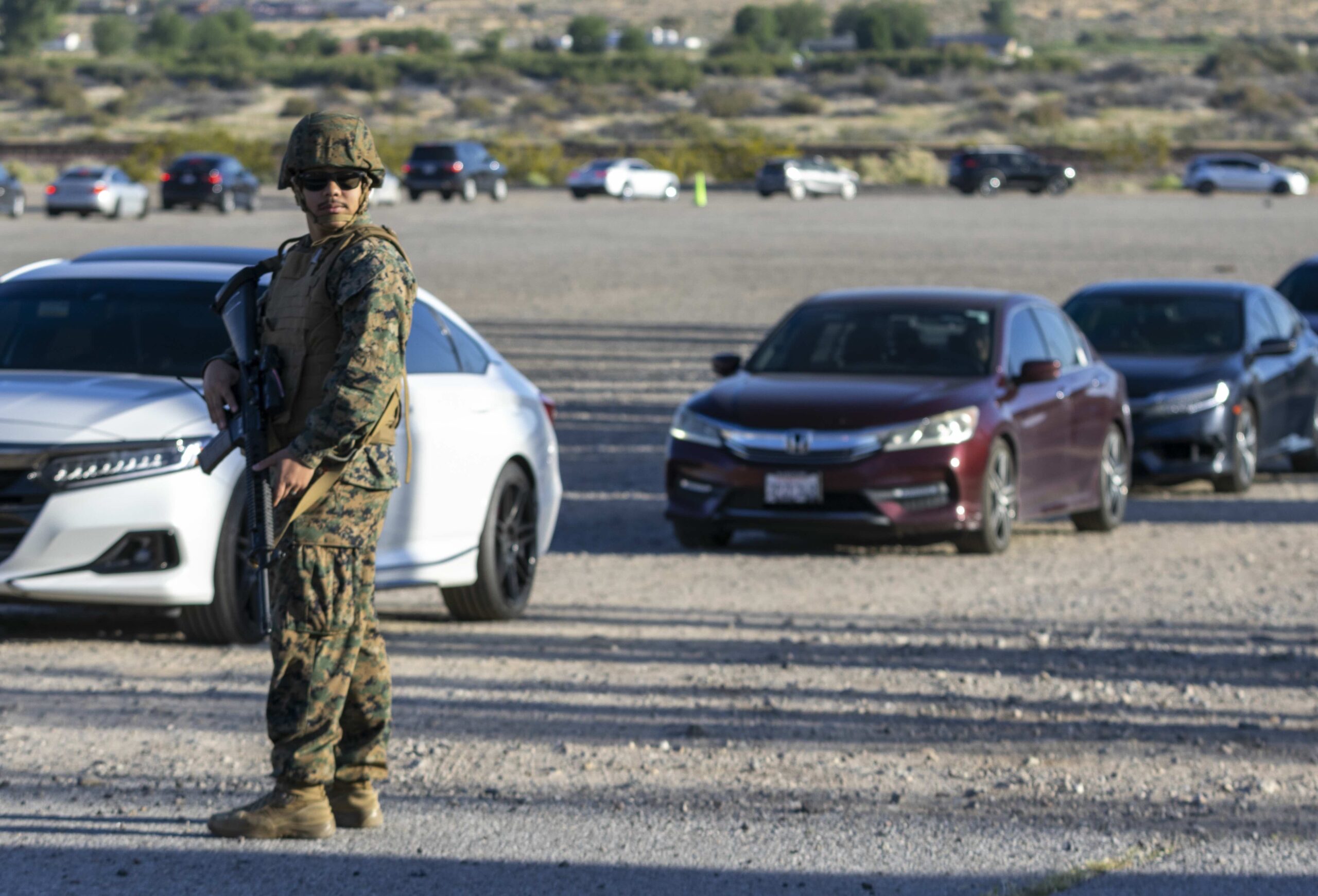
CAMP PENDLETON, Calif. – U.S. military forces training and deploying from their bases and stations for a future conflict or crisis will likely face a growing variety of threats close to home. Base intruders, drone swarms, civilian protests, cyber hackers, disinformation campaigns, natural disasters or power outages all can disrupt or thwart unit training and unit deployments.
Scripted, tabletop command-post exercises have long been the norm for annual base drills focused on anti-terrorism and force protection. But Marine Corps Installations-West officials in the Southwest have been shifting to the offensive, so to speak, to defend the home front.
“The homeland is not a sanctuary,” Col. Philip Laing, MCI-West’s chief of staff at Camp Pendleton Marine Corps Base, said in a recent interview.
“We’re not dismissing that threat,” Laing said, “but what we’ve done is we’ve opened the aperture now. What is our ability to defend against a state actor through multiple domains that’s also tied to asymmetrical threats?”
Last month Marine Corps Reserve personnel for the first time played the role of “enemy” or opposition forces through five days of unscripted free play during MCI-West region’s annual Semper Durus exercise. Adding operational forces to operational scenarios of I Marine Expeditionary Force and joint forces deploying and projecting power overseas marked “a significant change in the exercise design … and exercise objectives,” Laing said, noting “it forces you to think and fight a living, breathing adversary.”
“We need to be put into a position that is pressurized, that is not scripted, that forces us to work the problem. In simple terms, can we fight?” he said.
“So how do we support that effort … and how do we protect that?” he added. “How do we enable and protect power projection against a multi-faceted, multi-domain threat of a state adversary that’s also tied to an asymmetrical threat of opportunistic formations or parties that will take advantage? So that’s what is different this year.”
MCI-West set the foundation last year in an exercise with a “fight the base” mindset to support I MEF deployment scenarios, he added, and “this year, our attempt is to advance significant lessons learned.”
While the Marine Corps’ regions and bases conduct security drills annually, MCI-West officials are crafting what they see as a guide or baseline for how installations prepare for and provide security and support to operational forces – whether in peacetime or in the dynamic movements of crisis or conflict. Some 200,000 people live, work or are part of MCI-West’s base communities, officials said.
“We’re really trying to establish a proof of concept,” said exercise controller Jeff Williams, MCI-West’s operations and plans director and a retired officer. “We’re trying to share lessons” and develop “basically a playbook.”
The after action report for the regional commander also “allows us to address any types of gaps or concerns he may have,” Williams said, and identify any gaps or issues that can help build next year’s Semper Durus. “We want to learn from our mistakes, and we want to learn from gaps or identify gaps that we as an organization need to fix.”
“We would like this to become the model” for annual exercises, he said, noting “no one has ever conducted a free-thinking adversary in an installation protection exercise.” This year’s exercise didn’t include any live force-on-force play, but it’s a future goal, he added.
Observers during this year’s exercise included members from other regions and Marine Corps Installations Command, along with local, state and federal agencies like the FBI and Cybersecurity and Infrastructure Security Agency, officials said. “This is a more holistic approach to regional defense,” Laing added.
Tackling Threats, Managing Chaos
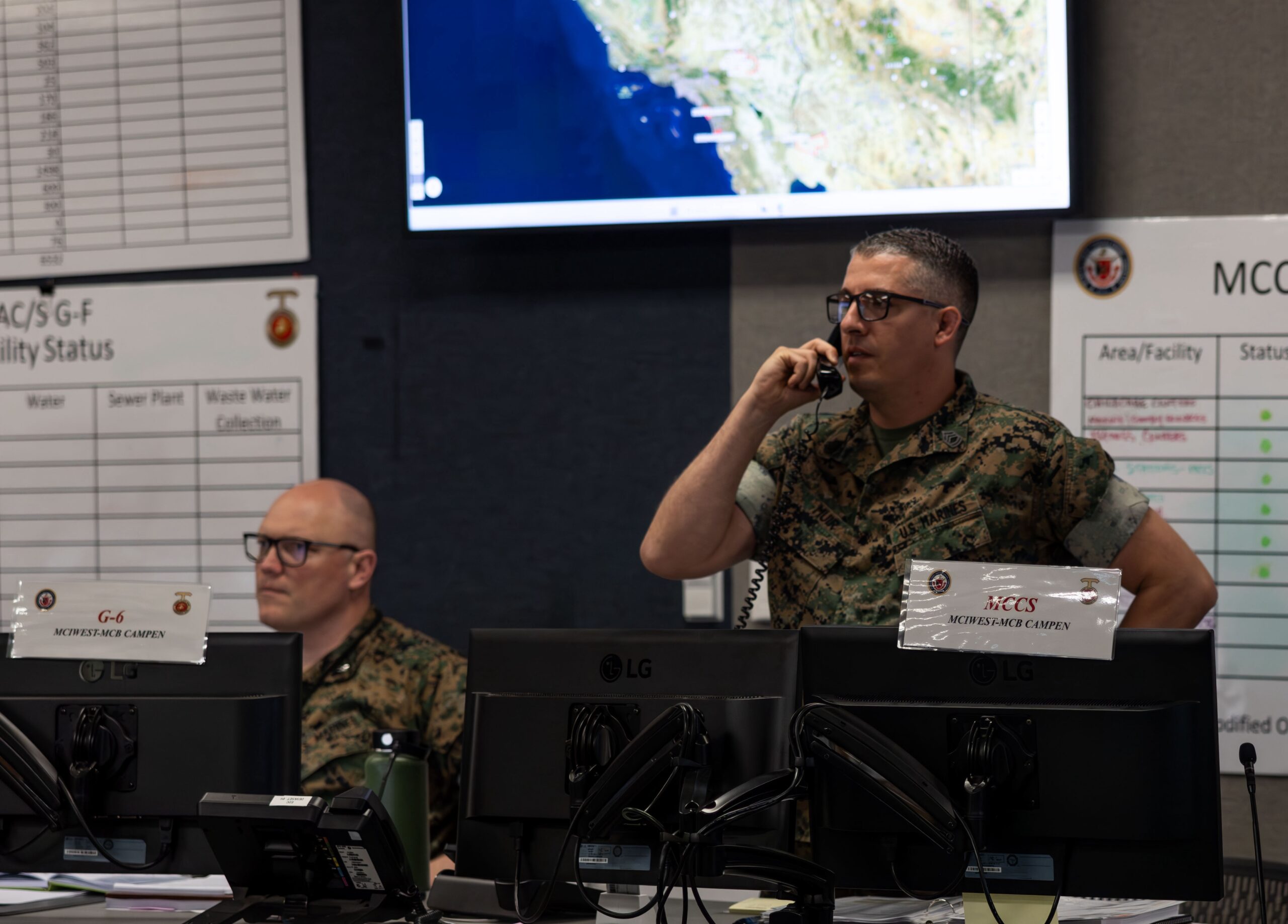
Members of the San Bruno, Calif.-based 23rd Marine Regiment headquarters led the opposing force, providing teams of disruptors that added new threats the region’s installations – Camp Pendleton and Marine Corps Air Station Camp Pendleton; MCAS Miramar, Calif.; MCAS Yuma, Ariz.; and Marine Corps Logistics Base Barstow, Calif. – had to tackle during homeland-defense mission scenarios.
The use of live, breathing operational forces rather than scripted “red” teams adds more realism and challenges training units and commanders, officials say. “The enemy mission statement is simply to disrupt force deployment,” Williams said.
Live operational forces also inject different perspectives than just the story lines that exercise the control developers create. “It’s just a fresh set of eyes, a fresh way to kind of attack the problem and attack the base and come up with different scenarios,” said Maj. James Carley, a reservist and operations officer with the 23rd Marine Regiment leading one of the operational force cells of reservists and active-duty Marines.
Their task “is to provide a ‘red cell,’ so basically a bad guy” to threaten and attack MCI-West facilities, Carley said during a lull in the exercise. “Our purpose is to creatively think of ways to inject amongst the four bases ways to attack the system and give them a different perspective on ways to … create chaos.”
“We can help the installations make improvements to their planning and their communications,” he said, as they must respond and tackle threats from opposition forces at their bases. “It gave them a different way to think through a problem. So now you have somebody not from the base, not from the organization, being the bad guy, so it’s a thinking enemy for them.”
Last year, Semper Durus shifted the exercise to 24/7 operations through five days, which pushed units and command staffs at Emergency Operations Centers to react to events, such as a gate breach, a hospital losing power, a hazardous material spill or downed communication links.
The operational forces played a role in driving some of those threats. “We know what’s going on, so we are kind of surprising them,” said Carley, who noted that there was order to the chaos as the 23rd Marines took a “phased approach to escalate the situation.”
“If they’re not getting what they need, we can turn it up and make it more challenging,” he said. “At the same time, if they are struggling or if they have something, we’re able to turn back our intensity to allow them to catch up. If we need to, we can reset … and start over and do the scenario over.”
They brainstormed and crafted scenarios, delving into their own military and civilian experiences to develop scenarios of “things that realistically could happen, with or without bad actors,” he added. Cutting electrical power to a camp, for example, “causes them their second and third order of effects” that base commanders then must immediately grapple with amid other missions. One scenario earlier that morning had a vehicle carrying hazardous materials crash by a base water treatment facility, raising questions about impacts to water safety and health.
“Because I’m trying to test different aspects of the base and of its responses, I’m not just focusing on the police department, I’m not just focusing on cyber,” Carley said. “I’m kind of throwing out a wide net and see[ing] what I can get.”
Semper Durus played out across the live, virtual and constructive training environment that provided a mix of real and “virtual” operational forces teams and exercise units at the region’s bases, Williams said. “It’s … not a war game in your traditional sense,” he said.
Scenarios had to be challenging but manageable, since the exercise played out while installations simultaneously managed the real-life daily work. “That kind of creates the dynamic of ensuring we have safety but ensuring we are still meeting our training objectives,” Carley said.
“I need to make sure the scenario is good enough to provide training,” he added, “but safe enough to make sure nobody gets hurt in any capacity.”
Integrating with Reserve Forces

One of MCI-West’s primary roles is to support operational forces, including the security, training and deployment of I MEF units and other forces that use and transit through Pacific and Southwest military bases for global deployments. That includes Marine Corps Reserve and others activated to deploy or to augment regional forces. Assisting in regional security exercises benefits reserve forces as well, officials said.
“It gives the regiment an opportunity to exercise the command staff [and] get the sets and reps,” said Laing.
“We want to support MCI-West. We want to get the integration. We want to help the Marine Corps as a collective whole – that is our first mission,” Carley said. “Being the bad guy creates a unique opportunity to do things that we don’t always get to do … to think outside the box,” he added. “They are getting their training value. On the flip side, my small teams are going out there actually executing proper controlling, proper reconnaissance, so it’s a win-win for every stakeholder.”
“I’m getting my communications, my command-and-control, and the Marines are getting actual physical training … from the lowest level all the way up to the highest level,” he said.
The training is also helping position 23rd Marines to practice command-and-control capabilities this summer for upcoming training and deployments, including the Integrated Training Exercise with 2nd Battalion, 23rd Marines, and regimental training during a Marine Air-Ground Task Force exercise at the Marine Corps Air-Ground Combat Center at Twentynine Palms, Calif.
“We haven’t done something like this … [for] probably eight years,” Carley said, “so this gives us a rapid running of C2, our command and control, on a larger scale.”


